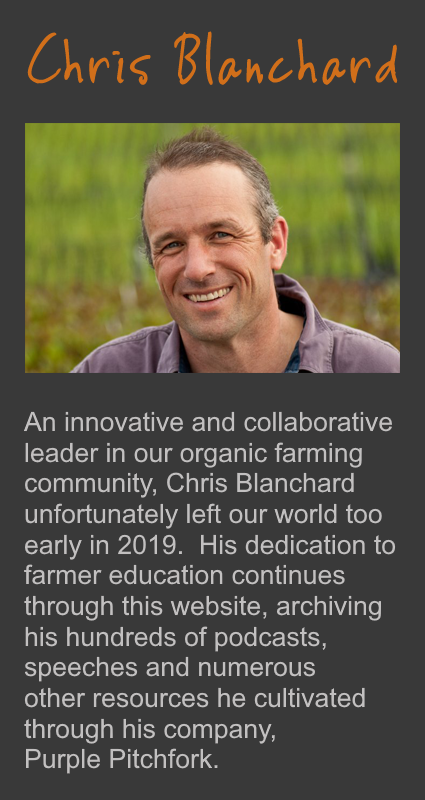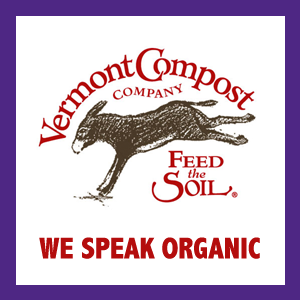The end of July is good time to assess the utilization of your resources. Are you harvesting what you planted? Are your crops showing up in nice successions? How is your weed control? What does your pack-out rate look like? Are your plants suffering from a lack of nutrients, or a lack of water? How are your workers doing – burned out and grumpy, or tired in a healthy way and still smiling?
And how about you? Are you experiencing the rubbed-raw, sunken-eyed, hollowed out sensation of being used up and hung-out to dry, or are you – while maybe not exactly bright-eyed and bushy-tailed as you unload your truck at farmer’s market – still finding smiles and feeling energy at the prospect of your work every day?
If you aren’t succeeding at the fundamentals this year, you don’t have the foundation for growth next year. You should be able to plan on succeeding with the vast majority of your plantings every year – the really successful farmers I know don’t plan on, and don’t have to deal with, crop failures. Before getting bigger, they got better.
If you can do better on the acres you’re already farming, that’s a surer path to success than an ever-expanding number of acres. That’s not to say that you have to start planting more intensively – not at all – but it is to say that when you do plant, you should harvest; and when you harvest, you should be getting optimal yields of quality produce from your plants without having your face in the foxtail. If not, look at what you can do to increase the output from the resources you've already got in play, and make some notes now so that you can make a better plan this winter.
And how about you? Are you experiencing the rubbed-raw, sunken-eyed, hollowed out sensation of being used up and hung-out to dry, or are you – while maybe not exactly bright-eyed and bushy-tailed as you unload your truck at farmer’s market – still finding smiles and feeling energy at the prospect of your work every day?
If you aren’t succeeding at the fundamentals this year, you don’t have the foundation for growth next year. You should be able to plan on succeeding with the vast majority of your plantings every year – the really successful farmers I know don’t plan on, and don’t have to deal with, crop failures. Before getting bigger, they got better.
If you can do better on the acres you’re already farming, that’s a surer path to success than an ever-expanding number of acres. That’s not to say that you have to start planting more intensively – not at all – but it is to say that when you do plant, you should harvest; and when you harvest, you should be getting optimal yields of quality produce from your plants without having your face in the foxtail. If not, look at what you can do to increase the output from the resources you've already got in play, and make some notes now so that you can make a better plan this winter.




 RSS Feed
RSS Feed
